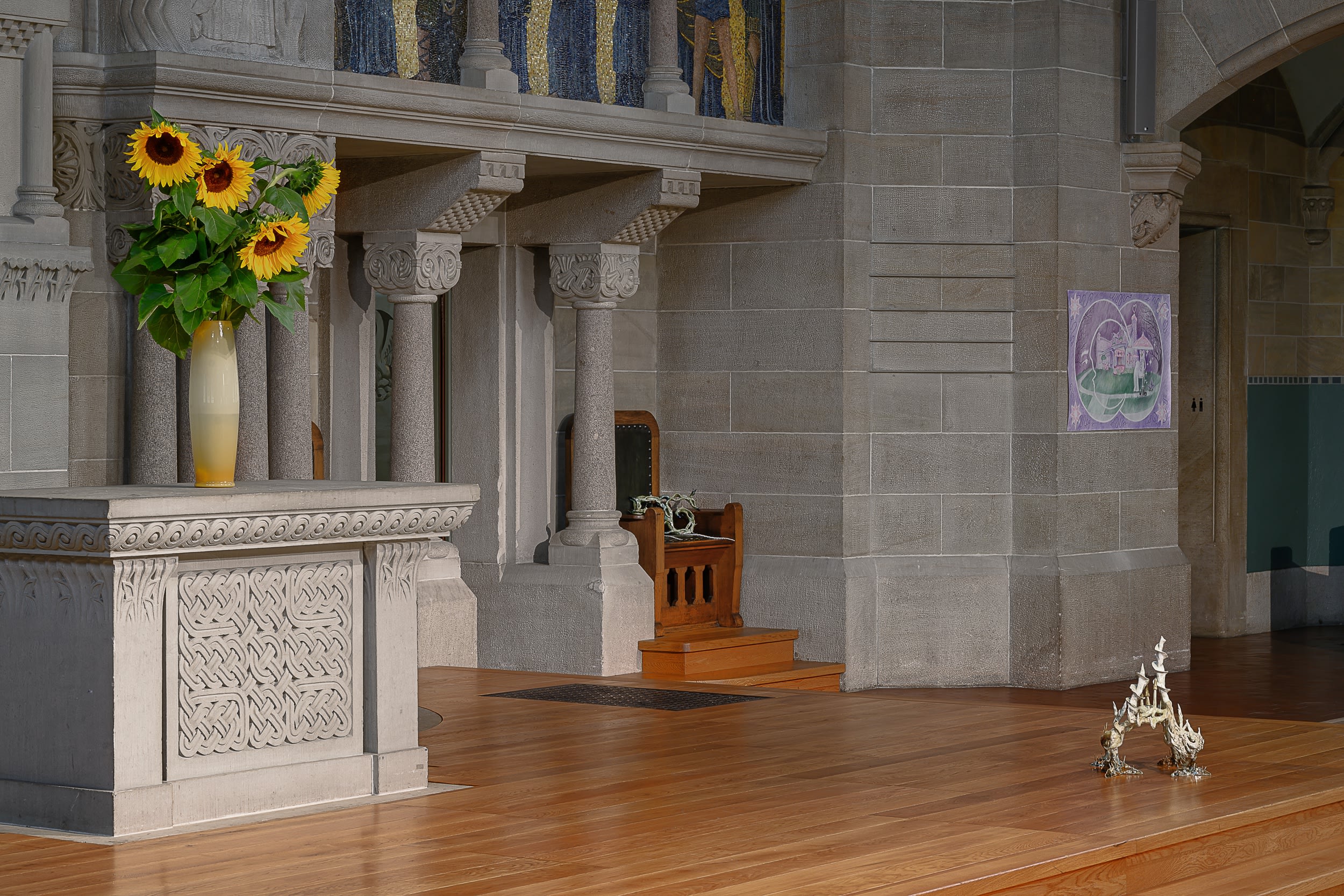-
Floral and Machine
Group show in St. Paulus Kirche -
"Floral & Machine" is an exhibition delving into contemporary art's intersection with architectural and ornamental traditions, with a critical examination of its ties to the Art Nouveau movement. Alphonse Mucha's pioneering work in the early 20th century, which shifted Industrial Revolution design paradigms towards organic principles, serves as a foundation. Present-day artists are revisiting these traditions, infusing floral and gothic sensibilities into their works, echoing a desire to reconnect with the the organic in our digital age. This artistic fusion, drawing from history, digital culture, and ecological consciousness, explores a "post-ornamental" aesthetic. Housed in Basel's St. Paulus church, designed by Karl Moser, the exhibition contextualizes contemporary expressions within architectural evolution, offering a unique perspective on time, tradition, and transformation.
-
The exhibition titled "Floral & Machine" endeavours to explore the realm of contemporary art that engages with architectural and ornamental traditions. It aims to critically examine this artistic approach within the context of the Art Nouveau movement and the era that gave rise to it.
Alphonse Mucha, a prominent Czech Art Nouveau artist of the early 20th century, achieved considerable recognition for his iconic posters and his architectural adornment. Notably, Mucha’s work - alongside peers such as Hector Guimard - laid the foundation for a paradigm shift in how the late stages of the Industrial Revolution could be characterized by organic design principles rather than strict rationality and linearity. This departure from mechanized and industrial modes of creation signalled a transformative departure, ushering in novel perspectives on technology and architecture. It can be perceived as a paradigm through which to embrace the future as a blossoming flower rather than a diminishing forest. Subsequently, the advent of the modernist movement in both art and architecture precipitated the removal of ornamentation from the visual landscape. The ascendancy of the rational industrial model resulted in a definitive dominance of efficient straight lines and uniformity in shaping the built environment.
Presently, in the wake of several decades and a subsequent technological and digital revolution, society finds itself undergoing another significant transformation. A renewed interest in diverging from systemic and minimalist artistic functionality has prompted the emergence of contemporary painting and sculpture movements infused with floral and gothic sensibilities. These artistic endeavours, ranging from subtle to pronounced, share a common aspiration to re-enchant the modern world. Contemporary technologies increasingly integrate natural structures, paralleling the rise of ecological consciousness in the face of climate challenges. This confluence has engendered a longing for a symbiotic relationship between humanity and its environment, thus informing prevailing aesthetic strategies. Drawing inspiration from fantasy, mythology, and historical underpinnings, these novel "post-ornamental" traditions interweave elements from history, digital culture, late-stage capitalism critique, and queer theory. This fusion echoes early Art Nouveau's blending of historical motifs with modern contexts.
To understand present-day ornamental traditions, a retrospective examination of history becomes imperative. Just as analogous movements emerged in response to the rapid societal changes of the past, contemporary shifts in artistic expression mirror the transformative currents of today. Analogous to Alphonse Mucha's influence during the 1900s, which reverberated from his Brno residence, present-day Slavic ornamental aesthetics similarly resonate in the art world, spreading as a significant creative influence.
The "Floral & Machine" exhibition is housed within Basel's St. Paulus church, designed by Swiss architect Karl Moser. A witness to the evolution of traditions, Moser transitioned from ornamental designs, evident in the floral mosaics of St. Paulus church, to the functionalist aesthetics embodied by St. Antonius, characterized by brutalist architectural features. The exhibition seeks to contextualize contemporary ornamental and architectural expressions within this architectural backdrop, embracing a space associated with floral embellishments of the Art Nouveau. The exhibition endeavours to present a compelling perspective on this artistic tendency and attitude, offering insight into the intricate dialogue between time, tradition, and transformation.

Theodor Nymark
Floral & Machine : Group exhibition in St. Paulus Church, Basel
Current viewing_room











